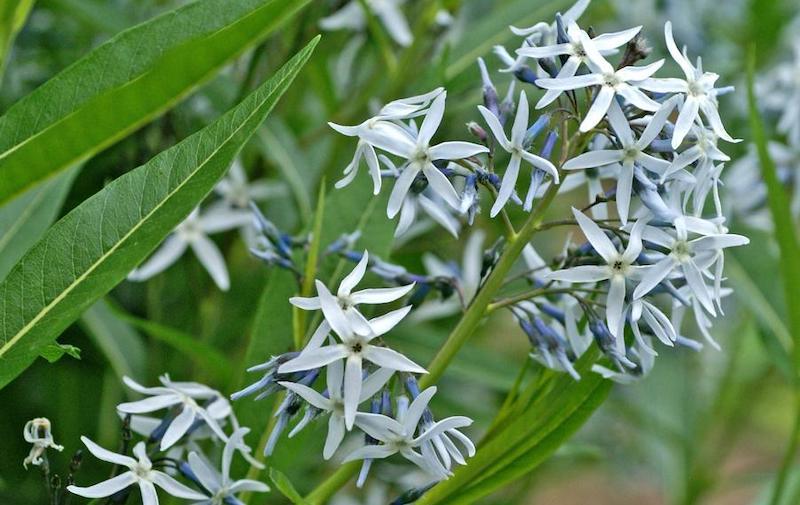Successful gardening can be summed up in one very basic sentence: The right plant in the right place. This ensures that all of your plants, whether in garden beds or containers, will thrive with little extra attention needed. Sun-loving plants growing in too much shade may fail to bloom, thrive, and fight off pests and diseases. Amsonia is a plant that needs to be grown in the right location for it to bloom profusely and display its striking autumn colors.

Common Reasons Why Amsonia Isn’t Blooming
The most common reason for Amsonia to bloom poorly or fail to bloom altogether is that it is planted in too much shade. Amsonia is a native plant of the South and Southeastern United States and can be found at the edge of woodlands and in open meadows growing in full sun. Amsonia growing in part shade will bloom considerably less and will often display a pale color. The growth may become leggy and weak, causing flopping and less dense growth. Over time, gardens that were once in full sun can become shadier due to maturing trees or larger shrubs nearby. Judicious pruning of trees and shrubs may be needed to allow enough sun to penetrate to the shorter plants. Young Amsonia plants may not bloom their first year as they put energy into root development.
Pruning Amsonia To Help It Bloom
Amsonia is an herbaceous perennial that dies back completely to the ground when it goes dormant for the winter. Pruning is not a necessary maintenance task and does not help the plant bloom any better. All of the flowers develop on new growth in the spring and begin blooming in May. Deadheading the spent blooms is not necessary because the plant does not rebloom.
Fertilizing Amsonia To Help It Bloom
Heavy fertilizing of Amsonia does not encourage more blooming and can make the plants grow taller and floppier even when planted in full sun. A light feeding early in the spring with a balanced, slow-release fertilizer is enough to support consistent growth all growing season. Annual mulching with high quality organic compost will not only keep the soil cooler and suppress weeds, but it will also slowly release nutrients in the soil as it breaks down. Apply a 2-3 inch layer of compost around the root zone of the plant, avoiding the base of the stems and growth crown.

Get Amsonia To Produce More Blooms
Amsonia produces a set number of flowers in a season and then continues growing foliage for its spectacular fall display. Extra fertilizing does not guarantee that the plant will give you more flowers. Pruning and deadheading have no effect on blooming.
Why Amsonia Isn’t Blooming
- Not enough sun exposure
- Growing in too much shade
- Overfertilizing, which does not result in more flowers
 |
Author Robbin Small - Published 6-06-2023 |
